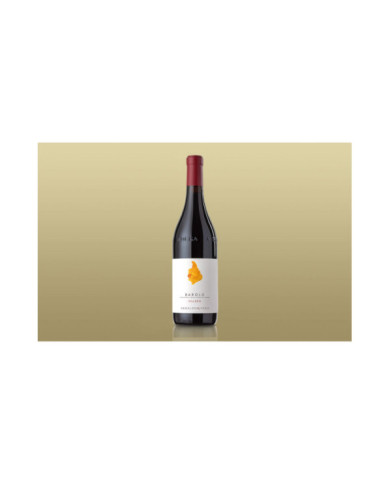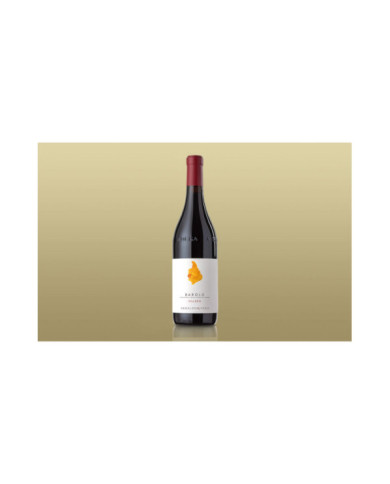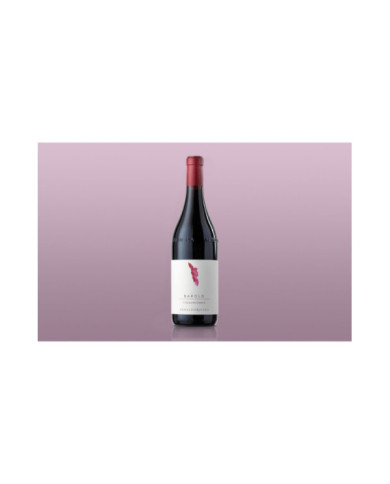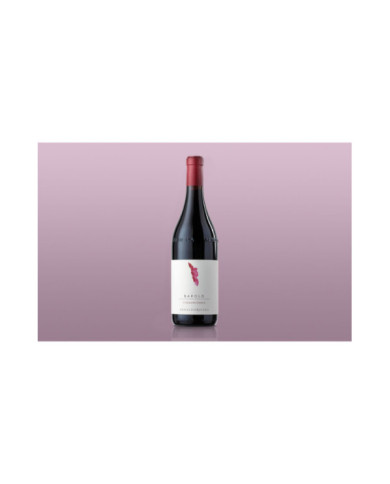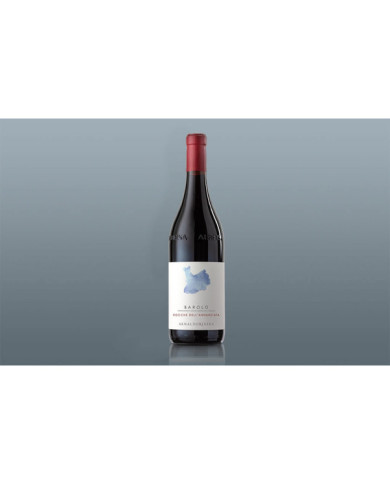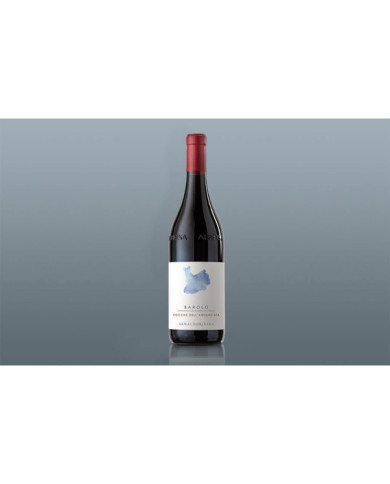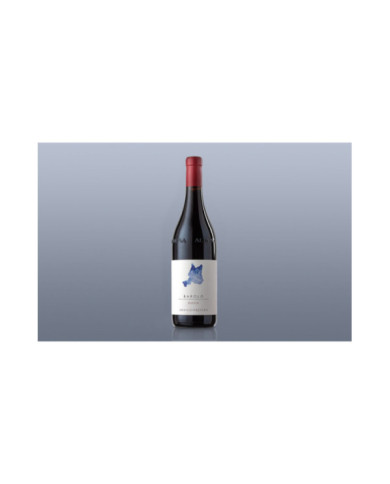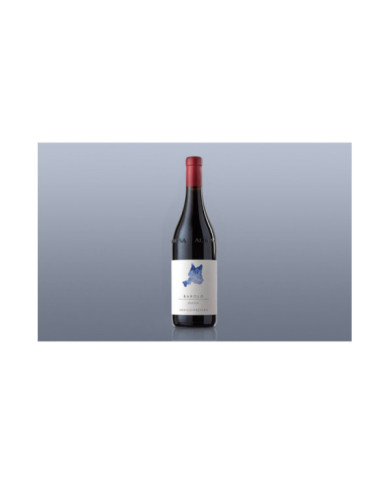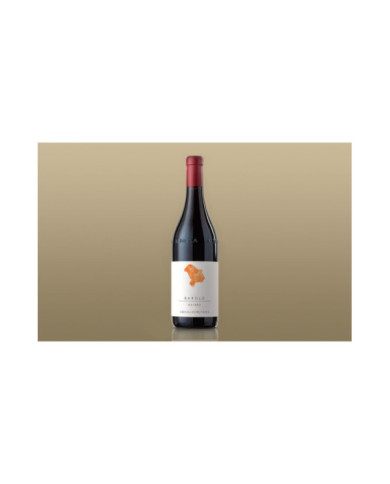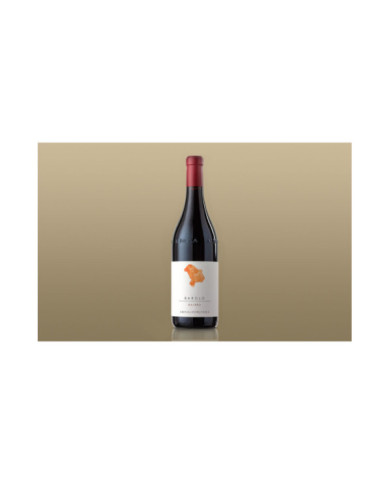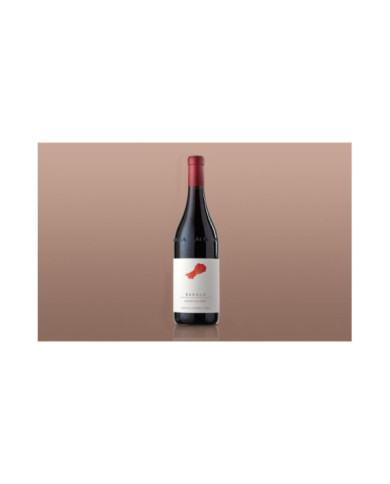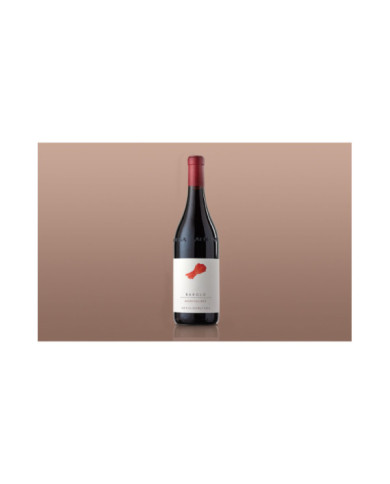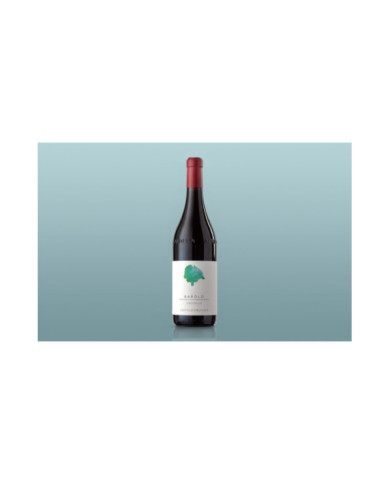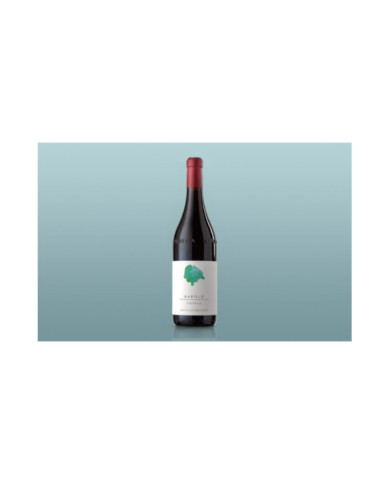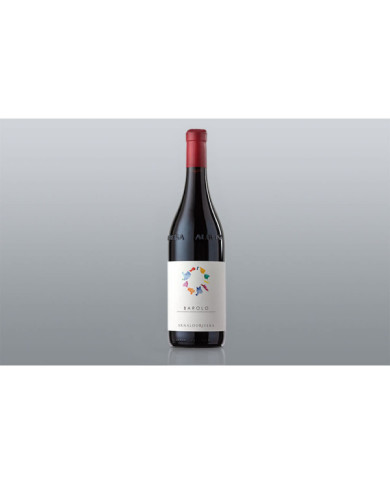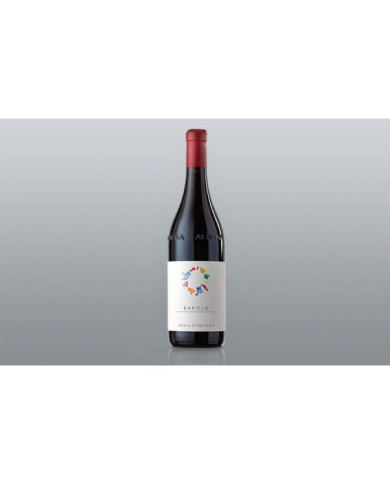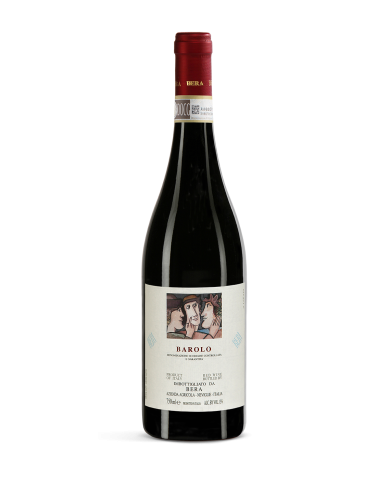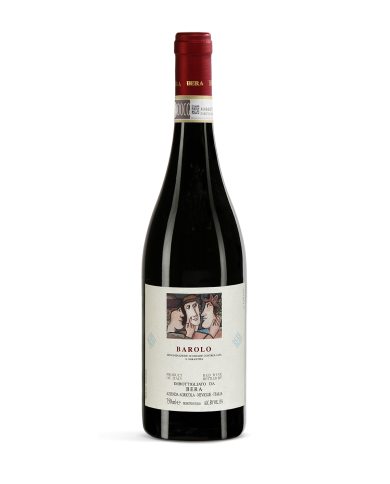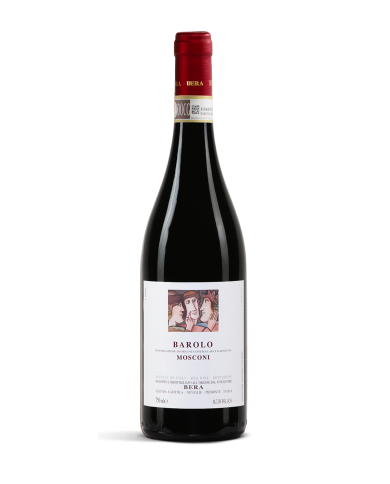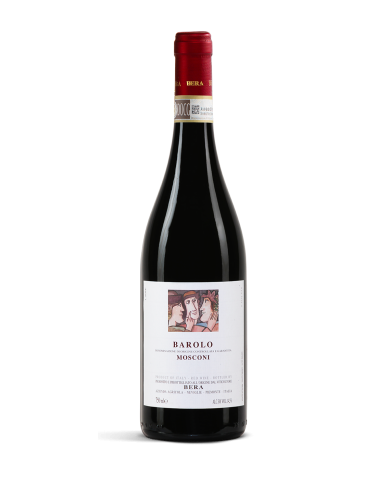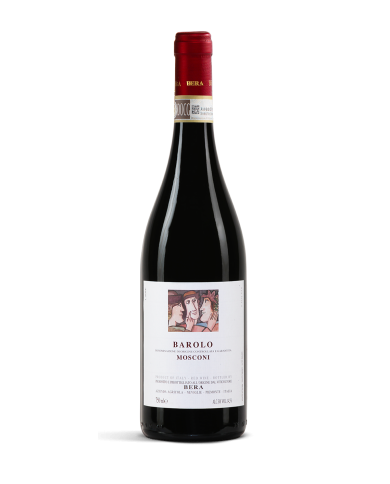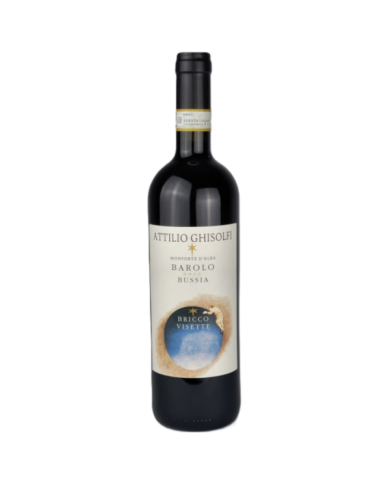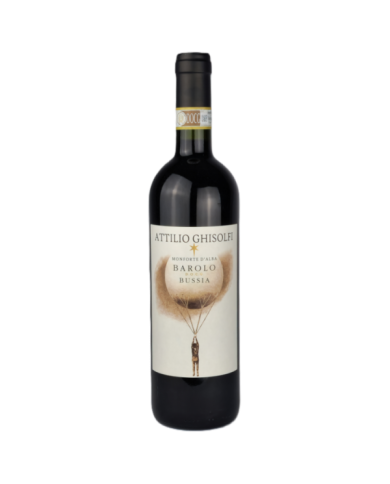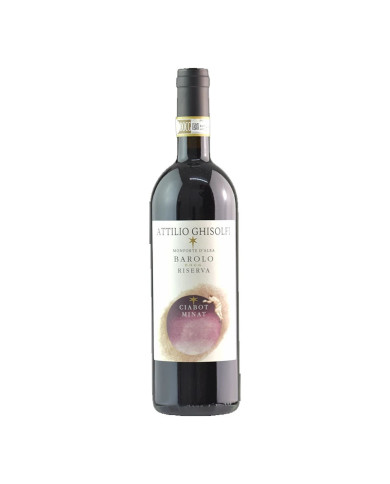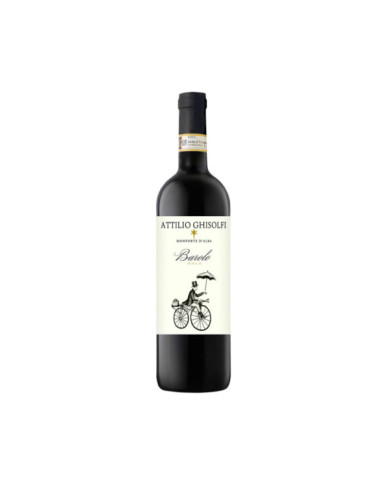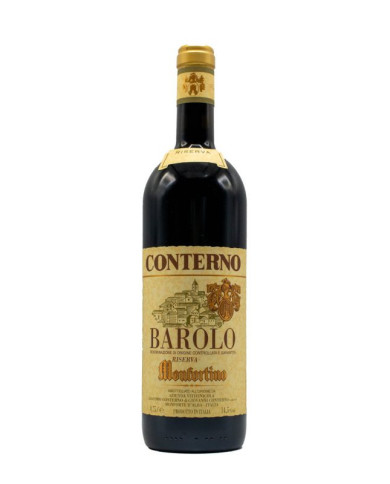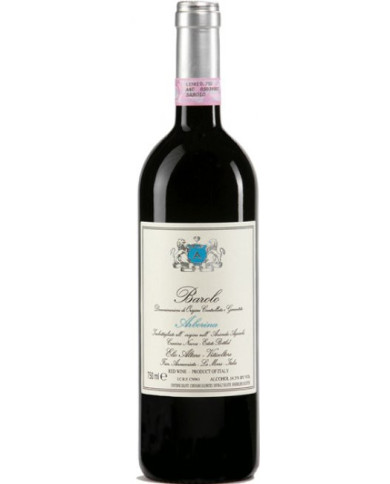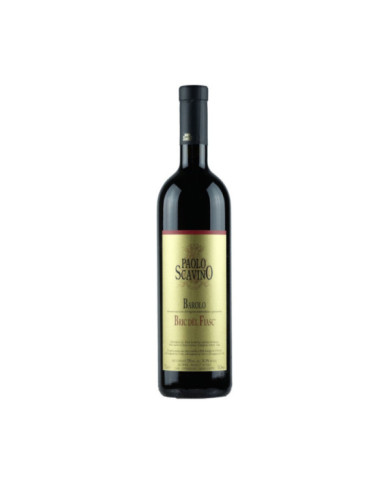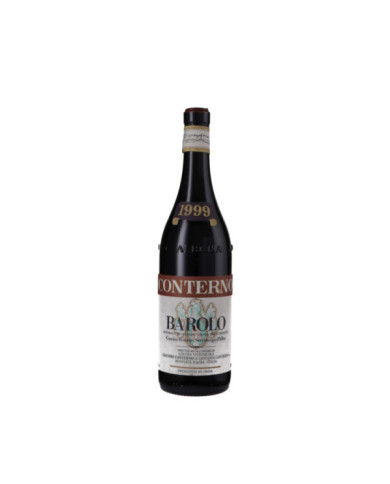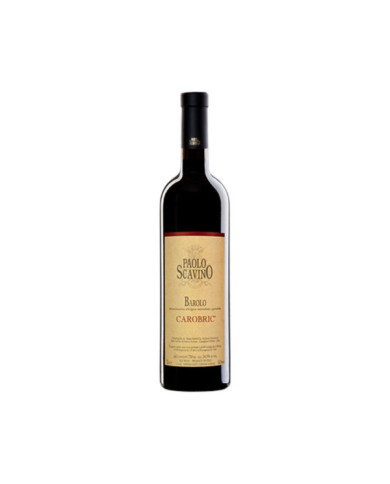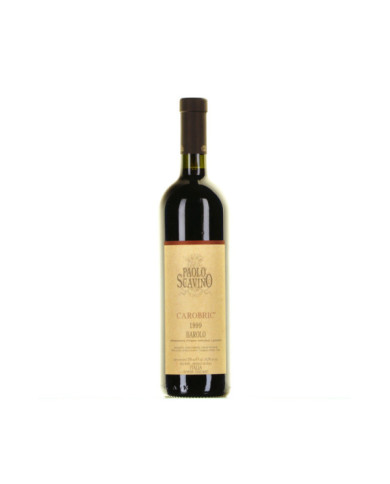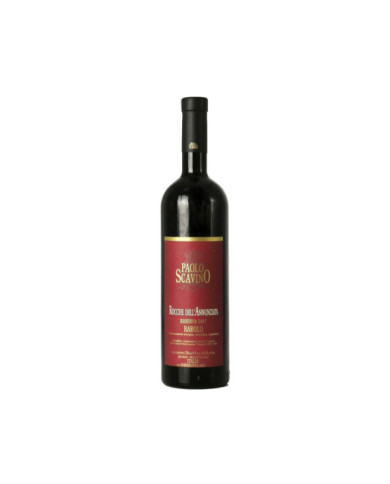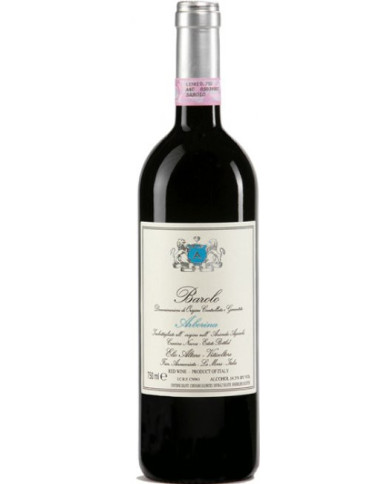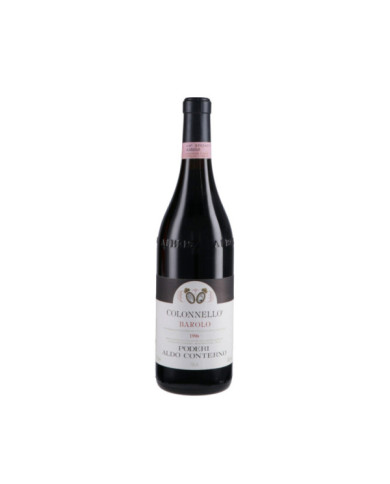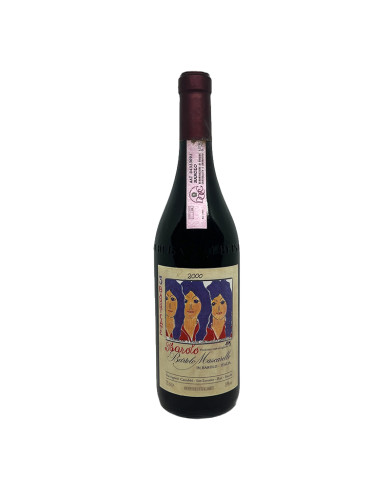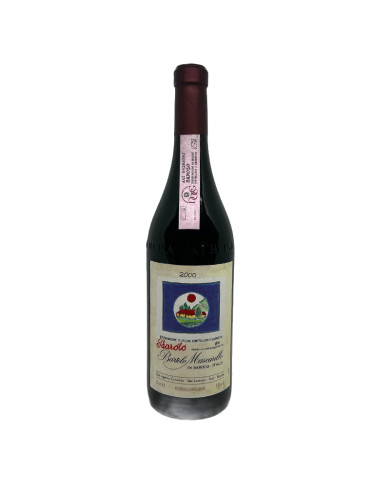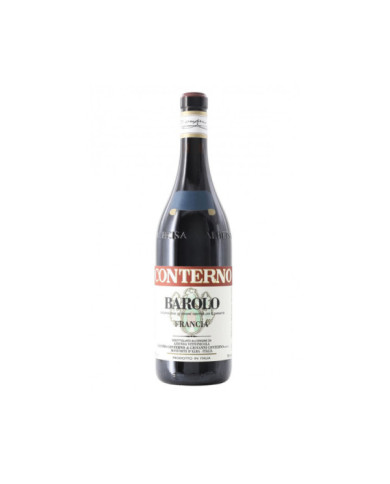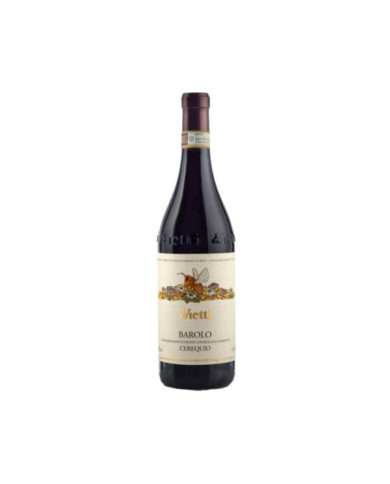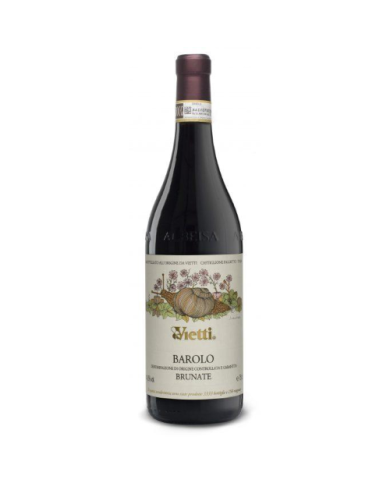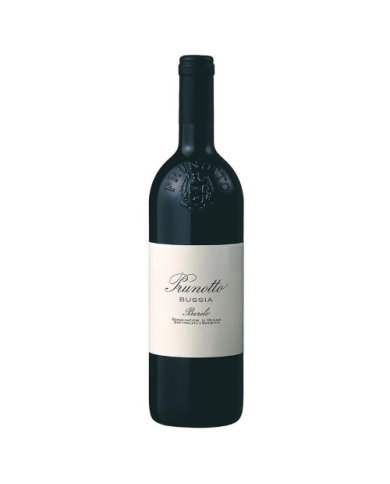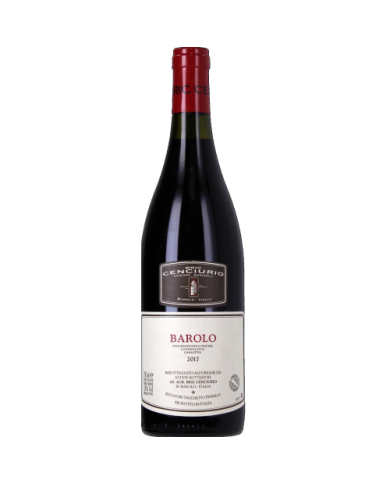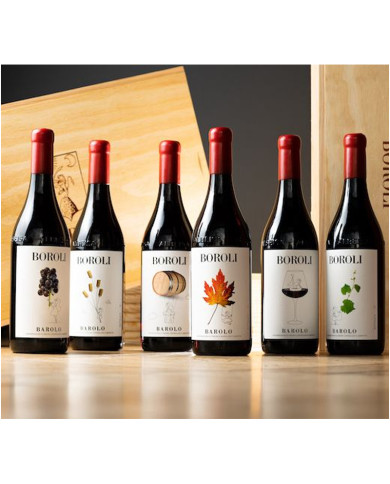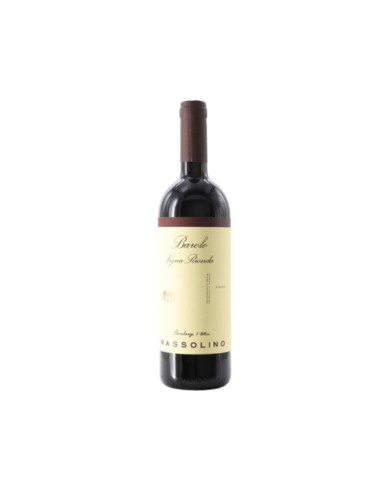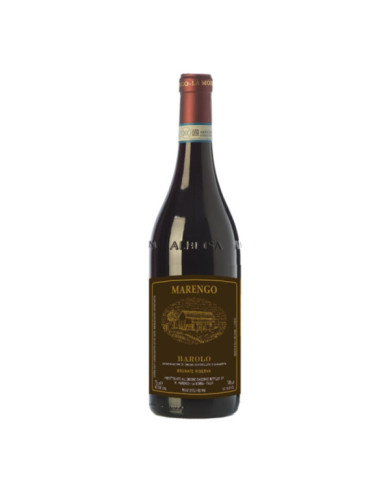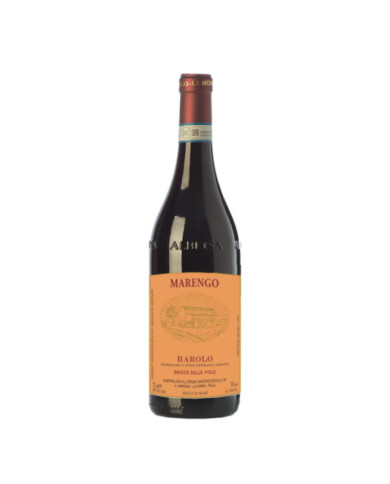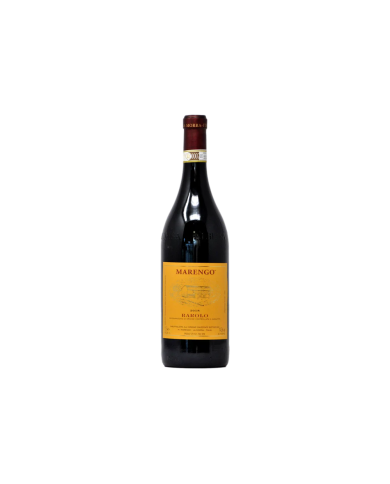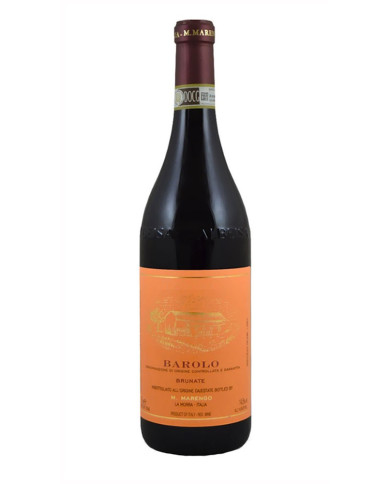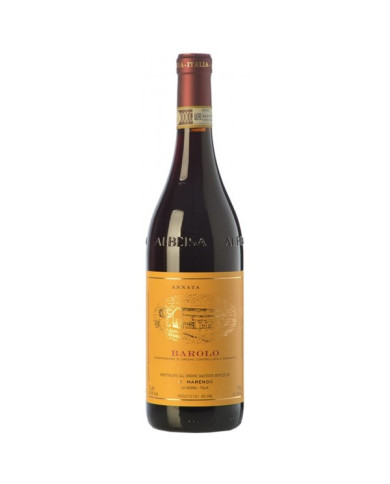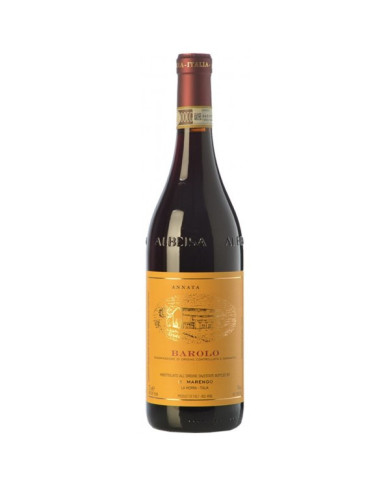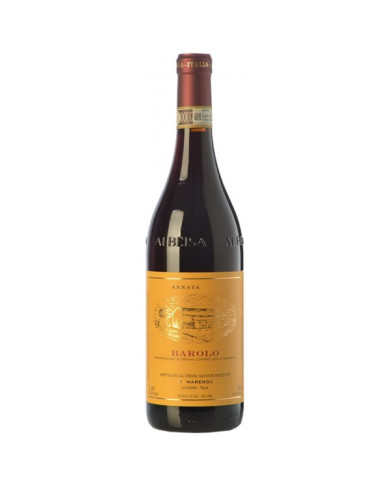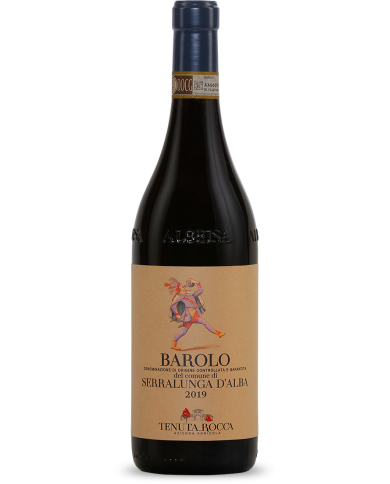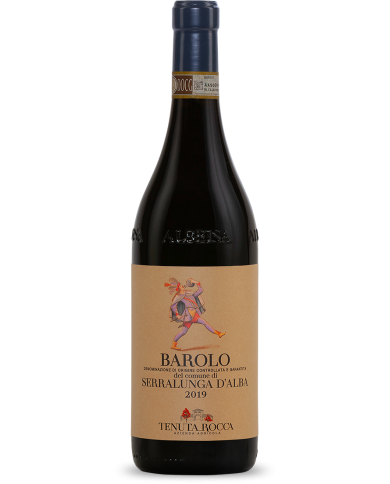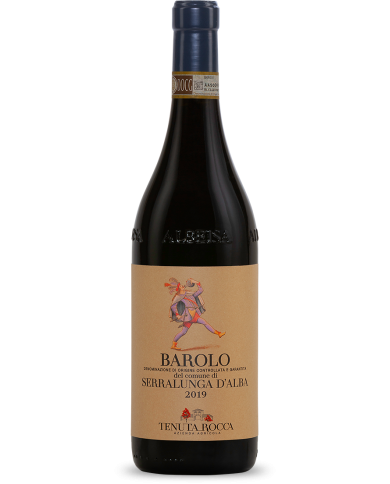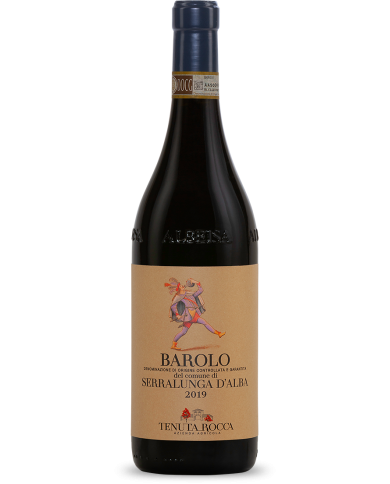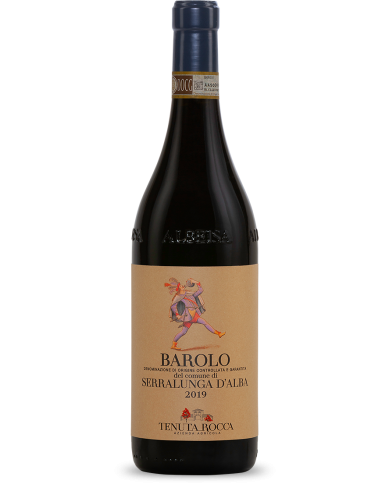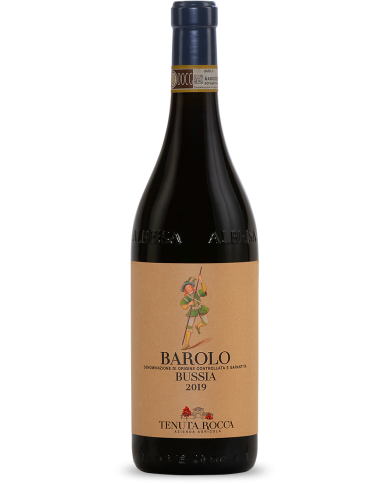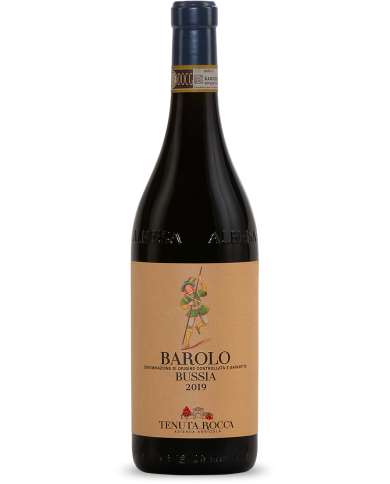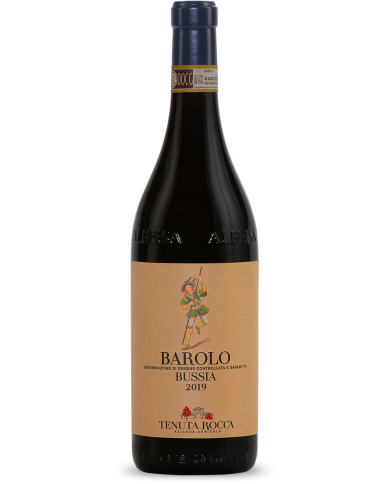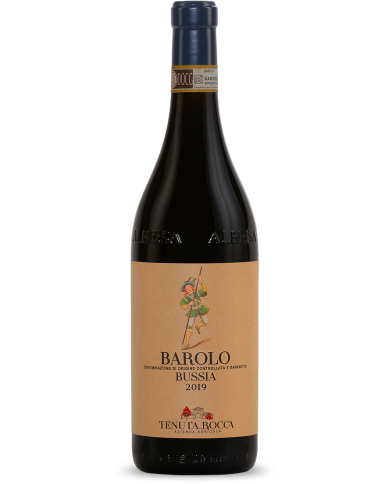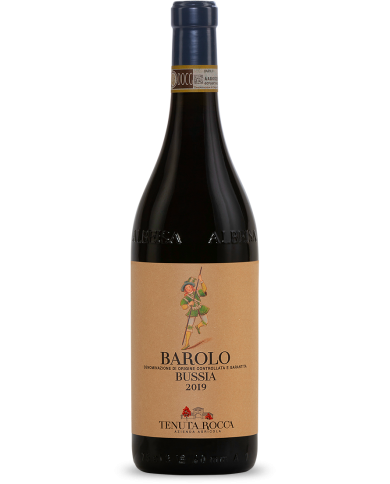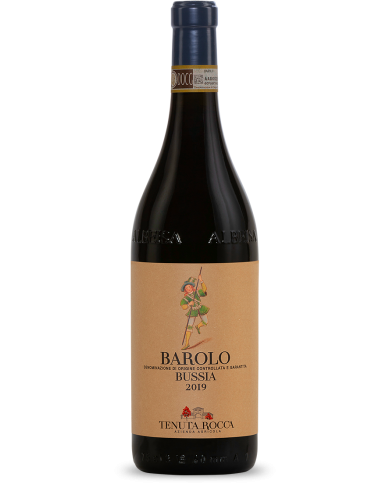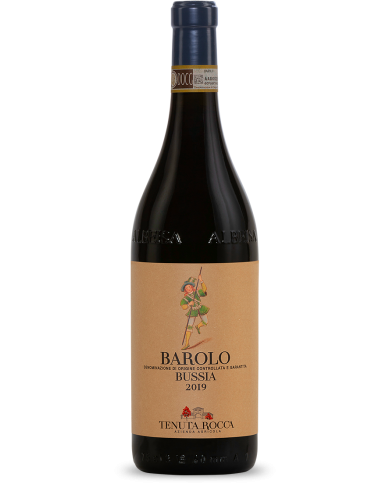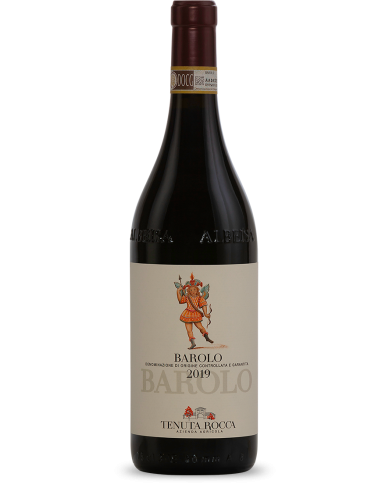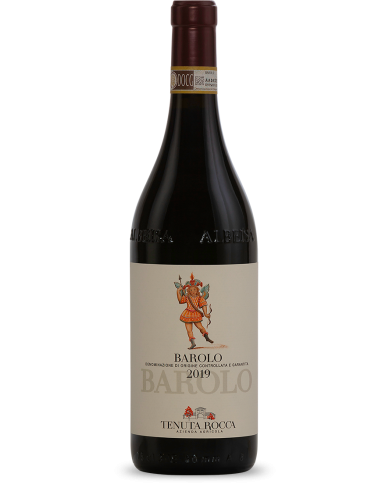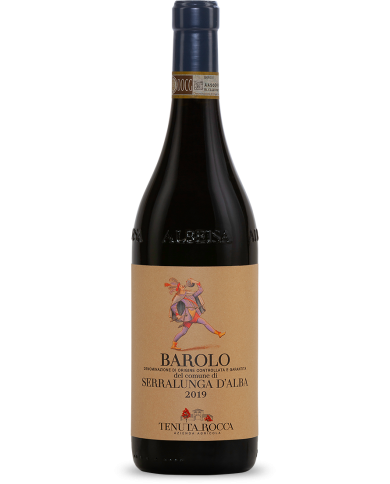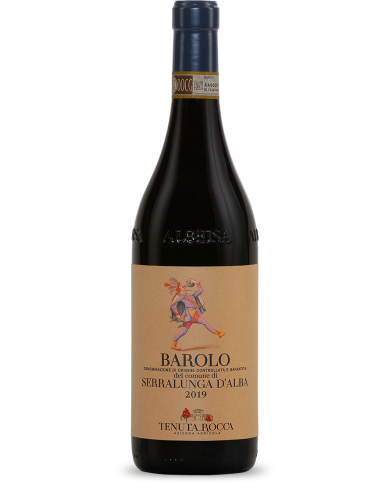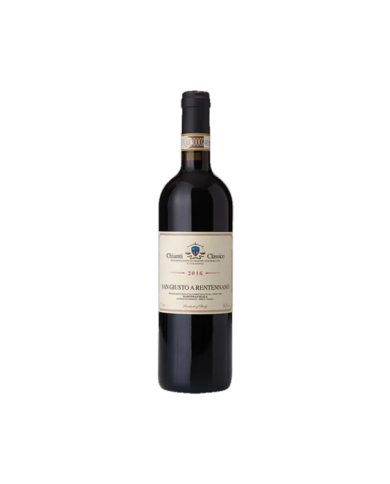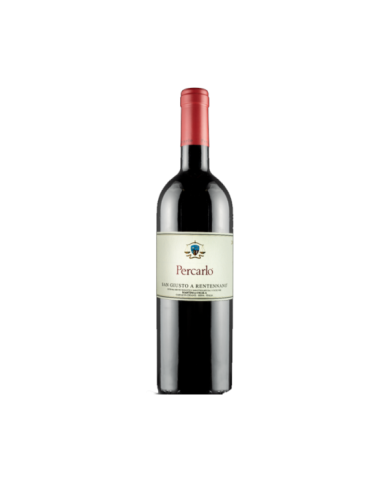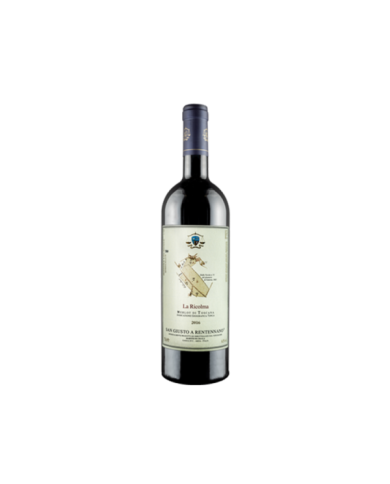Il Barolo ha origini antiche. Esistono documenti che testimoniano la coltivazione del Nebbiolo nella zona delle Visette gi├Ā a partire dal XII secolo. Lo stesso nome ŌĆ£VisetteŌĆØ deriva dallŌĆÖespressione dialettale ŌĆ£visŌĆØ(vite) e significa piccole viti. Ottenuto da uve Nebbiolo situate nel comune di Monforte dŌĆÖAlba, zona Visette (Bussia).
Questo vino rosso si presenta con un elegante colore rubino che sfuma verso il granato, promettendo complessit├Ā e profondit├Ā. Al naso, sprigiona un bouquet raffinato e floreale, con delicate note di ibisco rosso che si intrecciano a sentori di prugna matura e lampone fresco. Al palato, conquista con la sua struttura armoniosa e avvolgente, offrendo un'esperienza piena e bilanciata. I tannini, moderati e ben integrati, accompagnano con eleganza ogni sorso, rendendo il vino gi├Ā godibile fin da giovane. Il finale ├© lungo e persistente, lasciando un piacevole ricordo fruttato e vellutato.
Questo vino rosso si presenta con un elegante colore rubino che sfuma verso il granato, promettendo complessit├Ā e profondit├Ā. Al naso, sprigiona un bouquet raffinato e floreale, con delicate note di ibisco rosso che si intrecciano a sentori di prugna matura e lampone fresco. Al palato, conquista con la sua struttura armoniosa e avvolgente, offrendo un'esperienza piena e bilanciata. I tannini, moderati e ben integrati, accompagnano con eleganza ogni sorso, rendendo il vino gi├Ā godibile fin da giovane. Il finale ├© lungo e persistente, lasciando un piacevole ricordo fruttato e vellutato.
Questo vino rosso si presenta con un elegante colore rubino che sfuma verso il granato, promettendo complessit├Ā e profondit├Ā. Al naso, sprigiona un bouquet raffinato e floreale, con delicate note di ibisco rosso che si intrecciano a sentori di prugna matura e lampone fresco. Al palato, conquista con la sua struttura armoniosa e avvolgente, offrendo un'esperienza piena e bilanciata. I tannini, moderati e ben integrati, accompagnano con eleganza ogni sorso, rendendo il vino gi├Ā godibile fin da giovane. Il finale ├© lungo e persistente, lasciando un piacevole ricordo fruttato e vellutato.
Il Barolo ha origini antiche. Esistono documenti che testimoniano la coltivazione del Nebbiolo nella zona delle Visette gi├Ā a partire dal XII secolo. Lo stesso nome ŌĆ£VisetteŌĆØ deriva dallŌĆÖespressione dialettale ŌĆ£visŌĆØ(vite) e significa piccole viti. Ottenuto da uve Nebbiolo situate nel comune di Monforte dŌĆÖAlba, zona Visette (Bussia).
Questo vino rosso si presenta con un elegante colore rubino che sfuma verso il granato, promettendo complessit├Ā e profondit├Ā. Al naso, sprigiona un bouquet raffinato e floreale, con delicate note di ibisco rosso che si intrecciano a sentori di prugna matura e lampone fresco. Al palato, conquista con la sua struttura armoniosa e avvolgente, offrendo un'esperienza piena e bilanciata. I tannini, moderati e ben integrati, accompagnano con eleganza ogni sorso, rendendo il vino gi├Ā godibile fin da giovane. Il finale ├© lungo e persistente, lasciando un piacevole ricordo fruttato e vellutato.
Questa ├© la nostra espressione di Barolo ŌĆ£classicoŌĆØ. NellŌĆÖantica tradizione il Barolo veniva prodotto non da un singolo vigneto ma unendo uve provenienti vigneti dislocati in diverse zone e comuni del Barolo. Noi otteniamo questo vino da uve provenienti dei comuni di Monforte, Castiglione Falletto e La Morra.
Il Barolo Riserva Monfortino 1995 ├© un barolo pronto per essere bevuto, ma anche in grado di rimanere ancora per molti anni nelle vostre cantine.
Un grande classico da una grande vigna, il Barolo di Aldo Conterno proviene infatti da due diversi appezzamenti in Bussia, uno dei vigneti pi├╣ importanti di Monforte dŌĆÖAlba. Da qui, dopo unŌĆÖattenta selezione dei grappoli, le uve vengono portate in cantina per la successiva vinificazione in acciaio dove le bucce rimangono a contatto con il mosto per quasi un mese. Dopo la svinatura ed alcuni travasi il vino viene fatto maturare per oltre due anni in botti grandi di rovere. ├ł cos├¼ che nasce un Barolo di grande riconoscibilit├Ā, austero e profondo.
Il Barolo di Bartolo Mascarello ├© un monumento enologico del Piemonte, un indiscutibile punto di riferimento. Si tratta di un Barolo tradizionale di altissimo livello, maturato per 32 mesi in botte grande, dal fascino antico e dalla personalit├Ā ricca, robusta, intensa e complessa, in grado di incarnare magistralmente la memoria storica del territorio
Quando si parla di Bartolo Mascarello, si parla di uno dei miti delle Langhe piemontesi, capace di realizzare Baroli tradizionali di livello eccelso.
Il Barolo Francia di Giacomo Conterno prende nome dallŌĆÖomonimo vigneto sito in Serralunga dŌĆÖAlba, acquistato dall'azienda nel 1974.
Giulia Negri 's Barolo "La Tartufaia" is the producer's personal vision of the "La Morra" area who skilfully transforms the Nebbiolo grapes into an important and elegant red wine, with a deep and fine taste. On the nose the aromas are of red fruit, berries with notes of tobacco and licorice. On the palate it is full-bodied, enveloping with silky tannins and earthy and bloody sensations that close the sip.
Barolo Massolino represents the synthesis of the different characteristics that each terroir offers. The company has always favored the traditional aging in large Slavonian oak barrels to maintain a purer and more pure identity. Wide and variable range of perfumes, surprising expressive evolution over time.
Barolo DOCG is a wine produced in the Massolino cellar of Sarralunga d'Alba. The company boasts a family tradition now in its fourth generation and has always aimed to create bottles capable of expressing all the beauty of a unique territory with quality. The grapes come from the Nebbiolo vines, classics in this area rich in limestone and with a temperate climate, which favor its optimal cultivation. After the careful harvest, we proceed with the long-lasting maceration and fermentation which takes place in oak vats. Subsequently, it is aged for about 30 months in large Slavonian oak barrels. Before being put on the market, the wine needs a further period of aging in the bottle, in very dark and cool rooms, in order to obtain greater expressiveness. Barolo DOCG is a full-bodied and structured wine, which is well suited for immediate drinking, but can evolve in the cellar for several years.
Simply the Barolo di Serralunga at the peak of its potential. Barolo DOCG Vigna Rionda Riserva is the wine we are most proud of.
Massolino's Barolo "Parafada" comes from vines that are more than 50 years old from the Parafada di Serralunga cru and ages for 30 months in cask. The bouquet is floral, spicy, deep and very elegant. On the palate it is warm and soft, very harmonious and balanced, with a very long persistence
Barolo DOCG is a wine produced in the Massolino cellar of Sarralunga d'Alba. The company boasts a family tradition now in its fourth generation and has always aimed to create bottles capable of expressing all the beauty of a unique territory with quality. The grapes come from the Nebbiolo vines, classics in this area rich in limestone and with a temperate climate, which favor its optimal cultivation. After the careful harvest, we proceed with the long-lasting maceration and fermentation which takes place in oak vats. Subsequently, it is aged for about 30 months in large Slavonian oak barrels. Before being put on the market, the wine needs a further period of aging in the bottle, in very dark and cool rooms, in order to obtain greater expressiveness. Barolo DOCG is a full-bodied and structured wine, which is well suited for immediate drinking, but can evolve in the cellar for several years.
The Barolo "Bricco delle Viole" by Mario Marengo is an artistic and at the same time deeply territorial interpretation of this well-known Barolo cru. A Piedmontese red of great personality and expressiveness, characterized on the nose by the legendary aroma of violet with accents of sour cherry, black pepper, liquorice and plum. In the mouth it is juicy, tasty, with silky tannins and a long tasting persistence
After the careful manual harvest, only the best bunches are sent for fermentation in steel containers, with maceration on the skins for a period of 10 days. Subsequently, we proceed with the refinement which takes place in barriques and lasts 24 months.
Intense garnet red color with orange reflections. The nose is broad with delicate notes of violet and dog rose, hay and licorice in the background. On the palate the tannin is structured but delicate, tending towards sweet. The intensity of the drink is characterized by the juicy fruit that imprints the memory of the wine.
Intense garnet red color with orange reflections. The nose is broad with delicate notes of violet and dog rose, hay and licorice in the background. On the palate the tannin is structured but delicate, tending towards sweet. The intensity of the drink is characterized by the juicy fruit that imprints the memory of the wine.
Denominazione Barolo: A Treasure of Piedmont - The Excellent Red Wine of Italy
Discover the Denominazione Barolo, the excellent red wine from Piedmont. Read more about this Italian delight with its unmistakable taste and strong character.
Barolo is one of the most well-known and appreciated Italian wines in the world, but few people know that its official designation is "Denominazione di Origine Controllata e Garantita Barolo," often abbreviated as DOCG Barolo. This wine is produced in the hilly area of Piedmont, south of Turin, and is considered the king of red wines. Thanks to its unique composition, Barolo stands out for its intense and full-bodied flavor, with a garnet red color.
Characteristics of the Denominazione Barolo
The Production of Denominazione Barolo Barolo wine is primarily produced from Nebbiolo grapes, which are hand-harvested between September and October. After the harvest, the grapes are carefully selected and undergo a series of precise steps, including fermentation, maceration, and aging in wooden barrels for at least three years. These processes are crucial in imparting the Barolo with its unique and unmistakable flavor.
Organoleptic Characteristics of Barolo
Barolo presents an intense garnet red color with orange reflections. On the nose, one can perceive a fruity and floral aroma, with hints of rose, violet, cherry, and plum. On the palate, Barolo stands out for its full, tannic, and persistent flavor, with notes of spices, licorice, and chocolate. The finish is long and pleasant.
Production Zones of Denominazione Barolo
The Barolo Production Zone The Barolo production zone is located in the Langhe region, in the province of Cuneo, and comprises eleven municipalities: Barolo, La Morra, Castiglione Falletto, Monforte d'Alba, Serralunga d'Alba, Grinzane Cavour, Novello, Verduno, Cherasco, Roddi, and Diano d'Alba. This area is characterized by a continental climate with hot, dry summers and cold winters.
Other Production Zones
In addition to the Barolo zone, there are other production zones for Barolo wine, including Barbaresco, Alba, Verduno, Cherasco, Novello, Roddi, and Diano d'Alba. All of these zones are located in Piedmont and produce high-quality wines.
Pairing Barolo with Food
With Red Meat Dishes Barolo pairs perfectly with red meat dishes such as filet, braised meat, roasts, game, and aged cheeses. In general, this wine goes well with intense and robust flavors.
With Piedmontese Traditional Dishes It is the ideal wine to accompany Piedmontese traditional dishes such as Brasato al Barolo (beef braised in Barolo wine), Agnolotti with meat sauce, and Bagna Cauda (a warm garlic and anchovy dip). These typical dishes perfectly complement the strong and bold character of Barolo.
With Chocolate If you love chocolate, try pairing it with Barolo. Its tannic structure and intense, full-bodied flavor create a perfect contrast with the sweetness of dark chocolate.
FAQ about Denominazione Barolo
What is the difference between Barolo and Barbaresco?
Barolo and Barbaresco are both high-quality Piedmontese wines produced from Nebbiolo grapes. The main difference between the two wines is the production zone: Barolo is produced in the Barolo zone, while Barbaresco is produced in the respective zone. Additionally, Barbaresco is usually less tannic and softer than Barolo.
What is the best vintage for Barolo?
The best vintage for Barolo depends on the climatic conditions of the production year. In general, exceptional vintages are considered to be 2010, 2008, 2006, and 2004.
What is the ideal serving temperature for Barolo?
Barolo should be served at a temperature between 18 and 20 degrees Celsius. If the wine is too cold, its aromas and flavors may not fully express themselves.
Barolo is one of the most famous and appreciated Italian red wines worldwide, thanks to its characteristic tannic structure and intense, full-bodied flavor. Its official designation is "Denominazione di Origine Controllata e Garantita Barolo," and it is produced in the hilly area of Piedmont. Barolo pairs perfectly with red meat dishes, Piedmontese traditional dishes, and dark chocolate. Try Barolo and let yourself be captivated by its unmistakable character!






